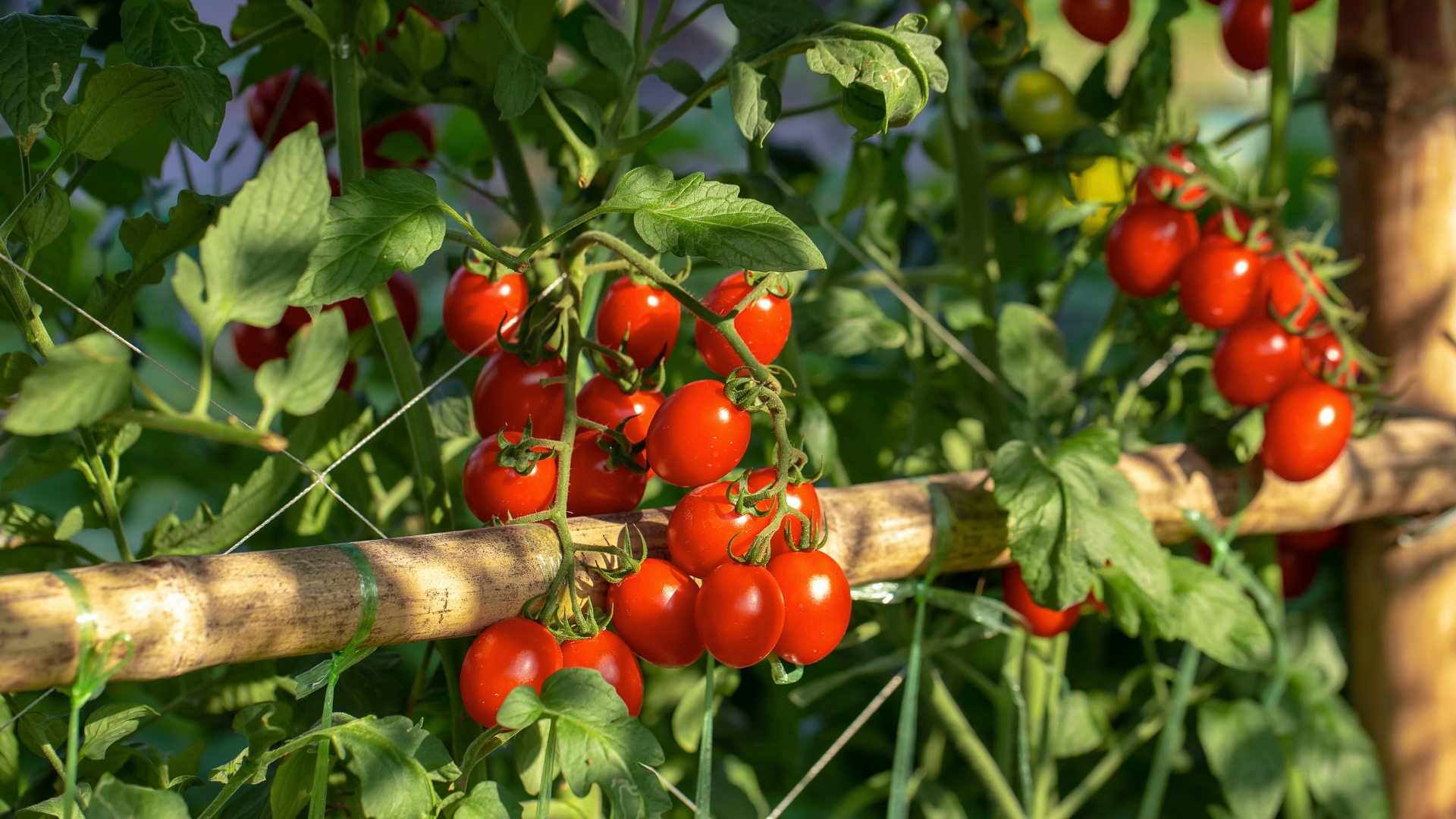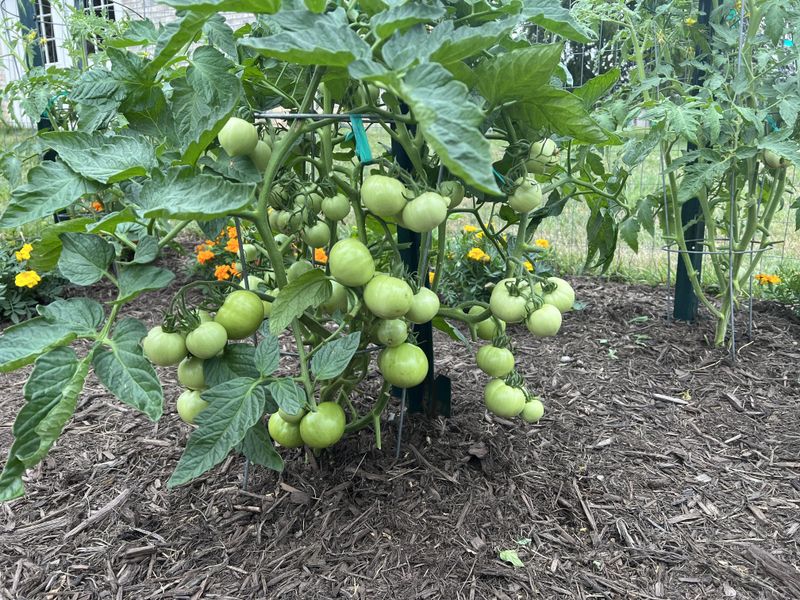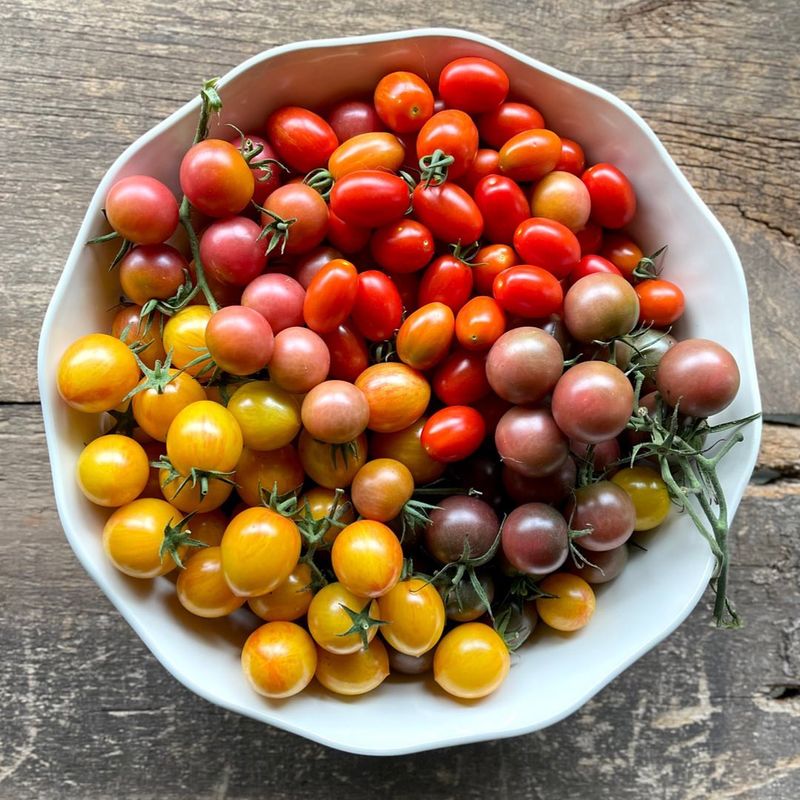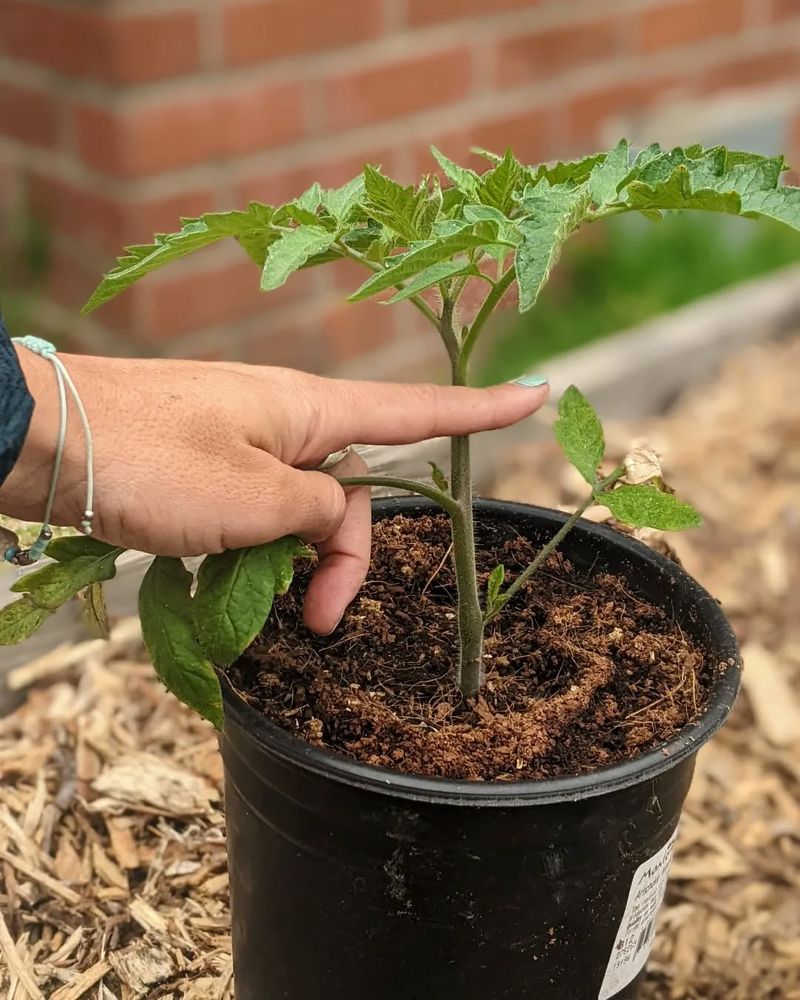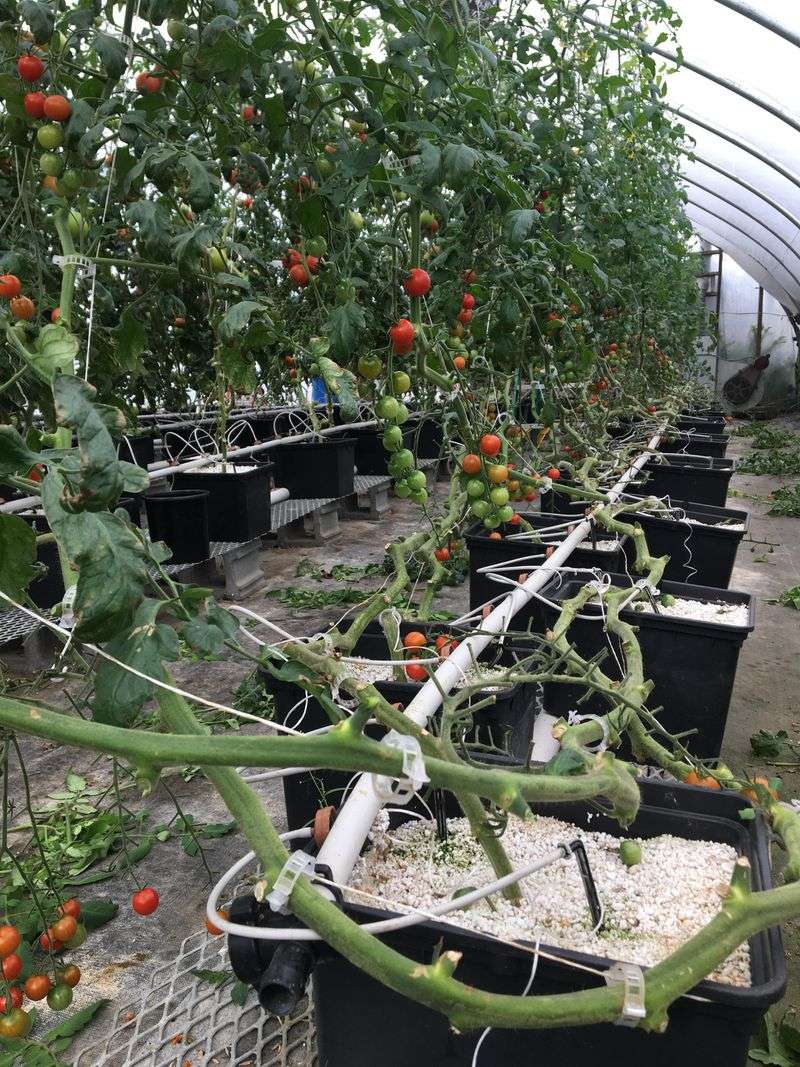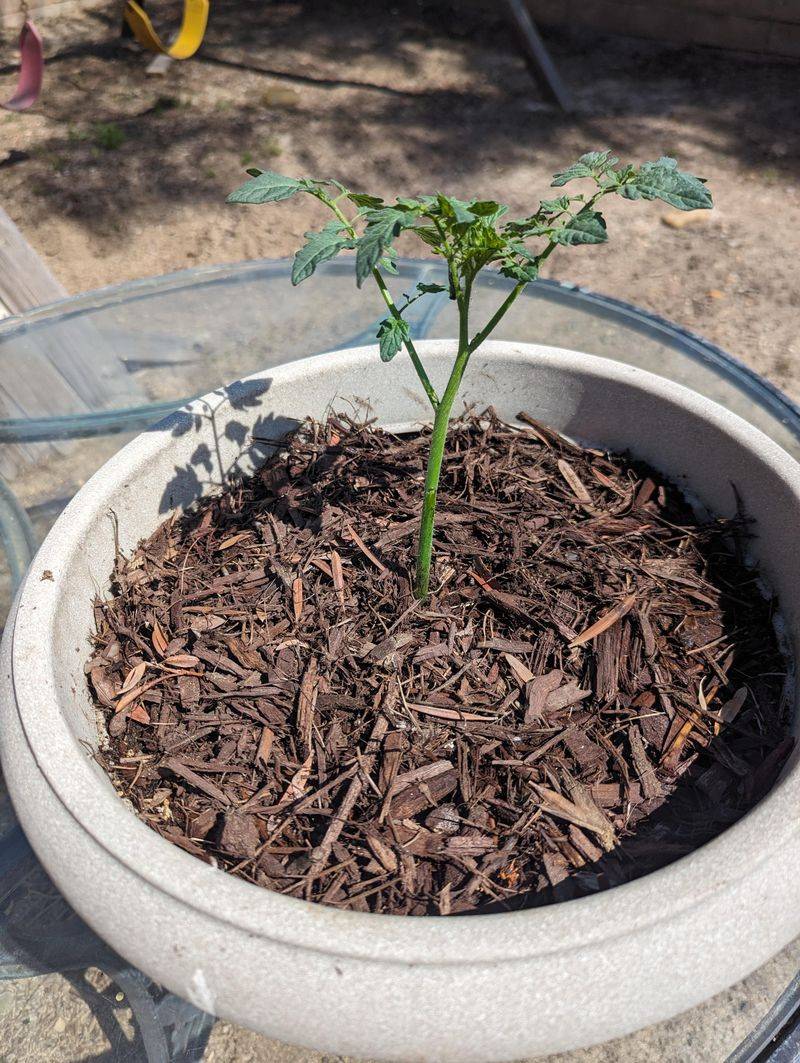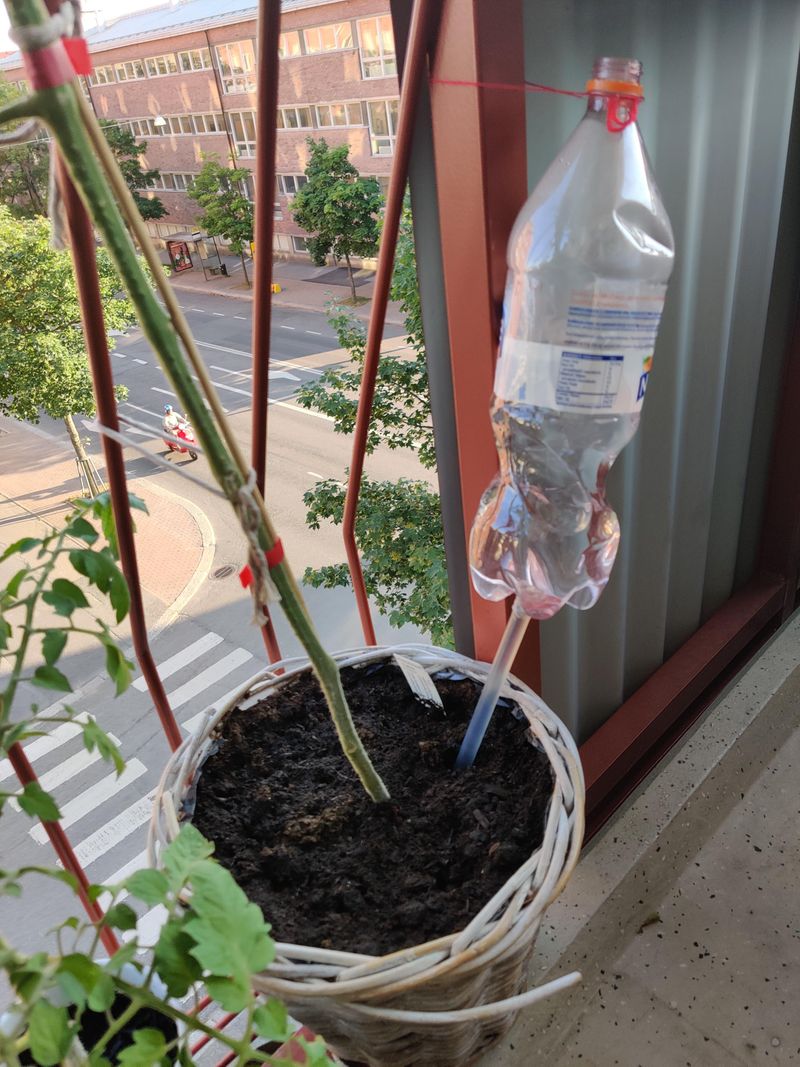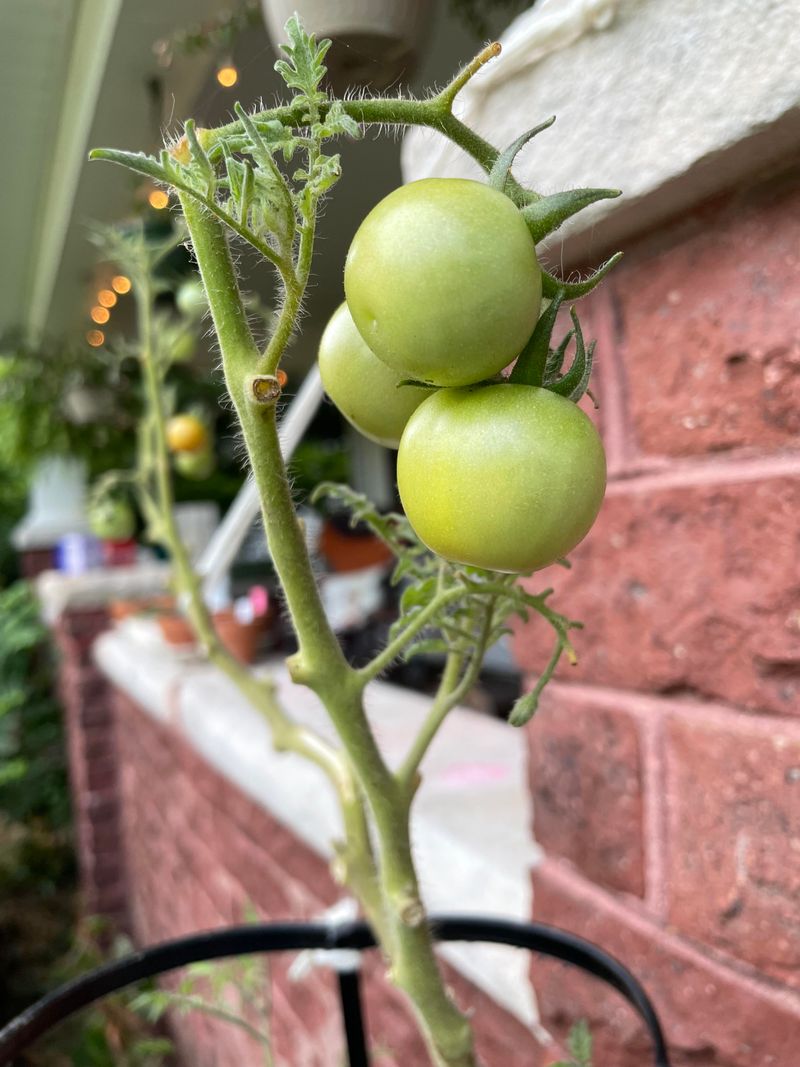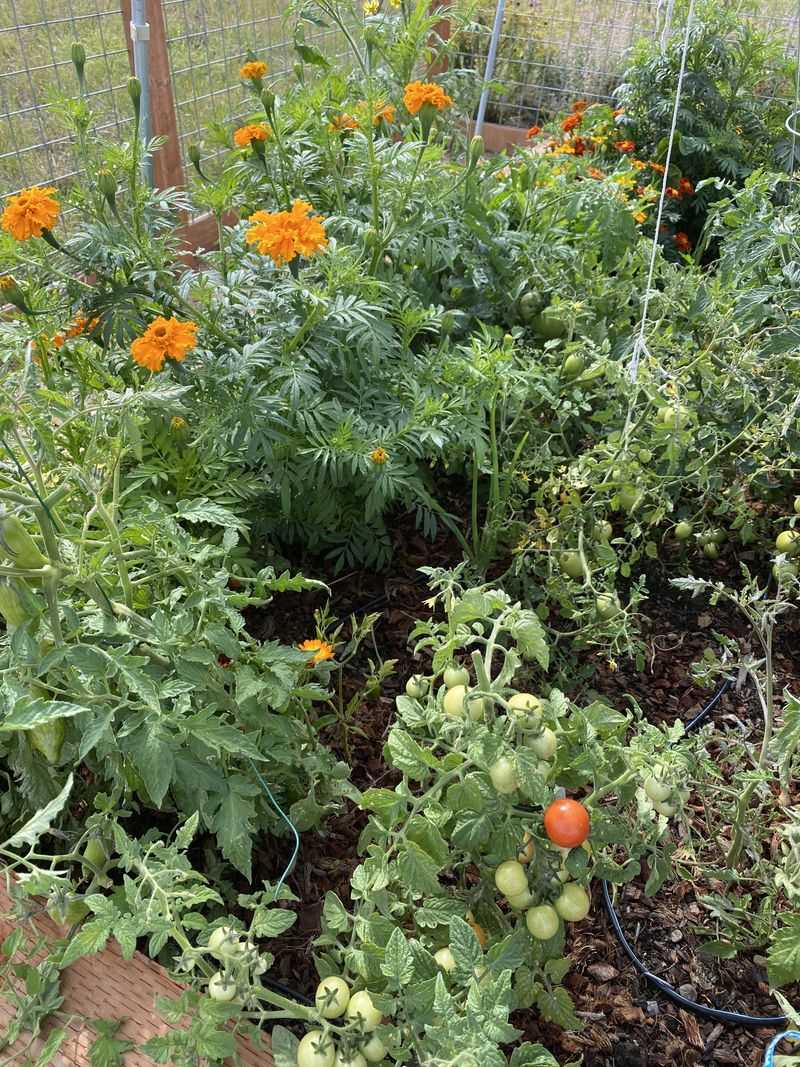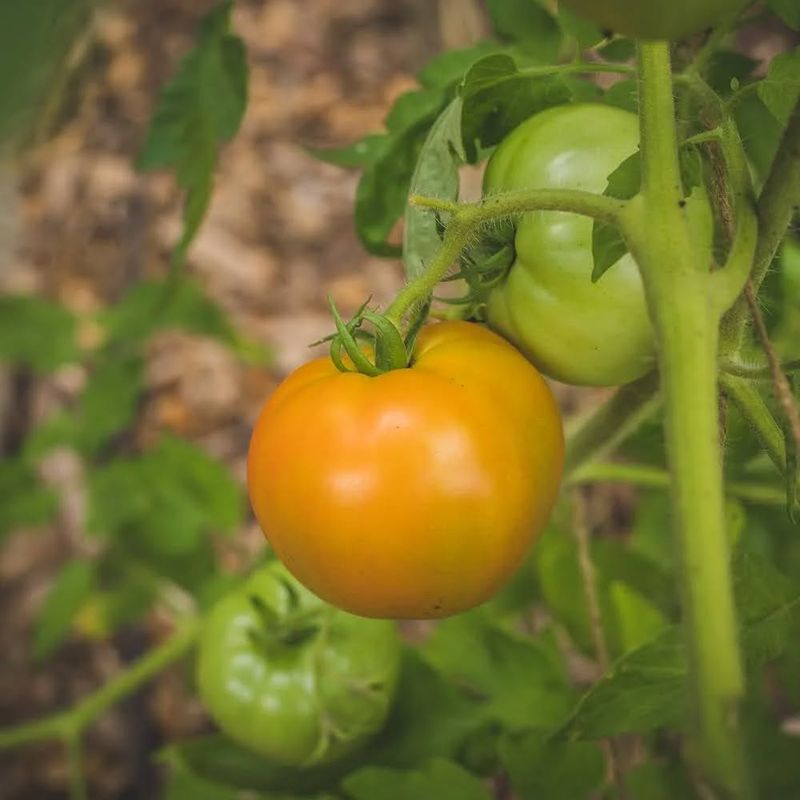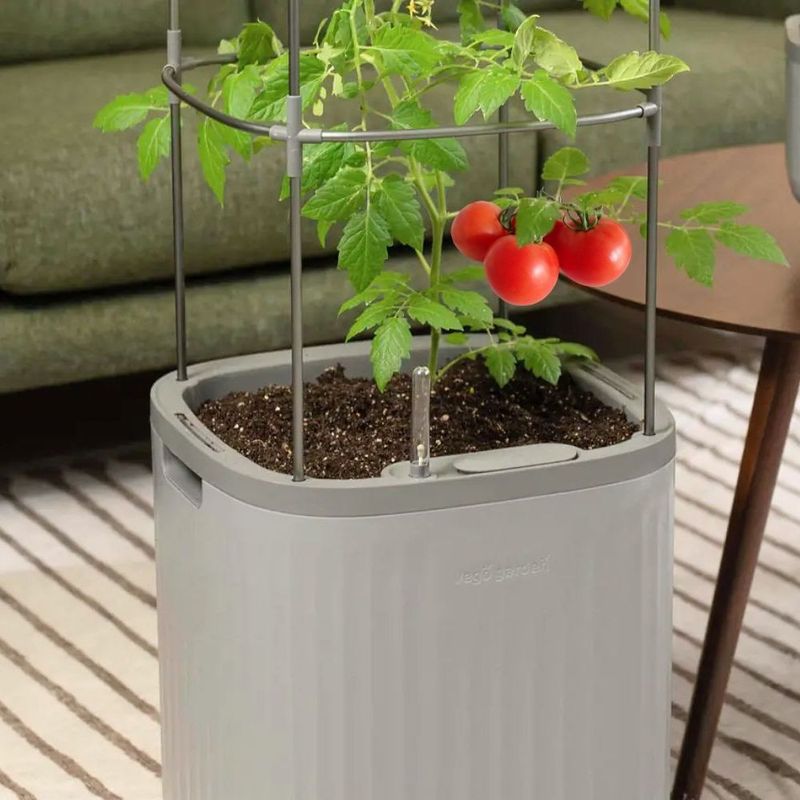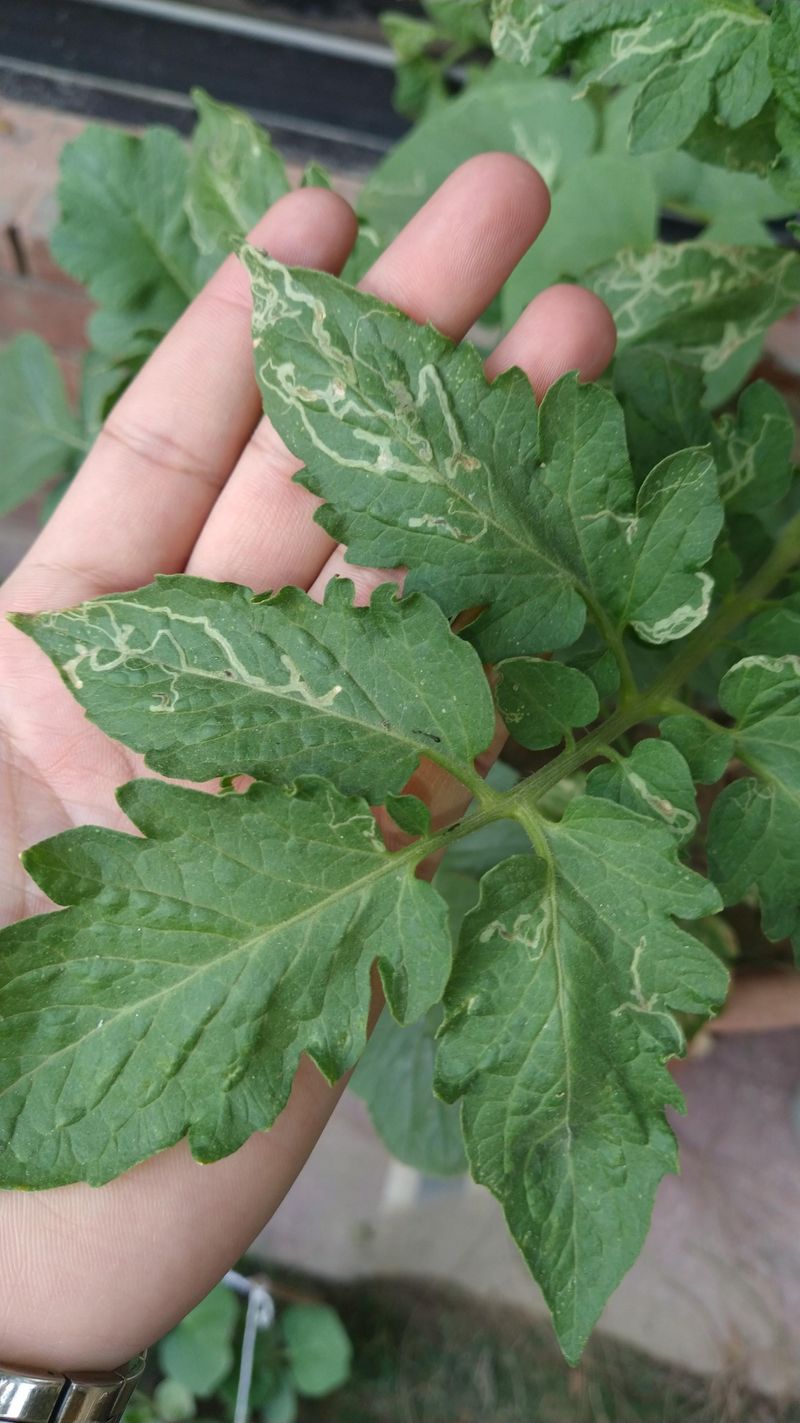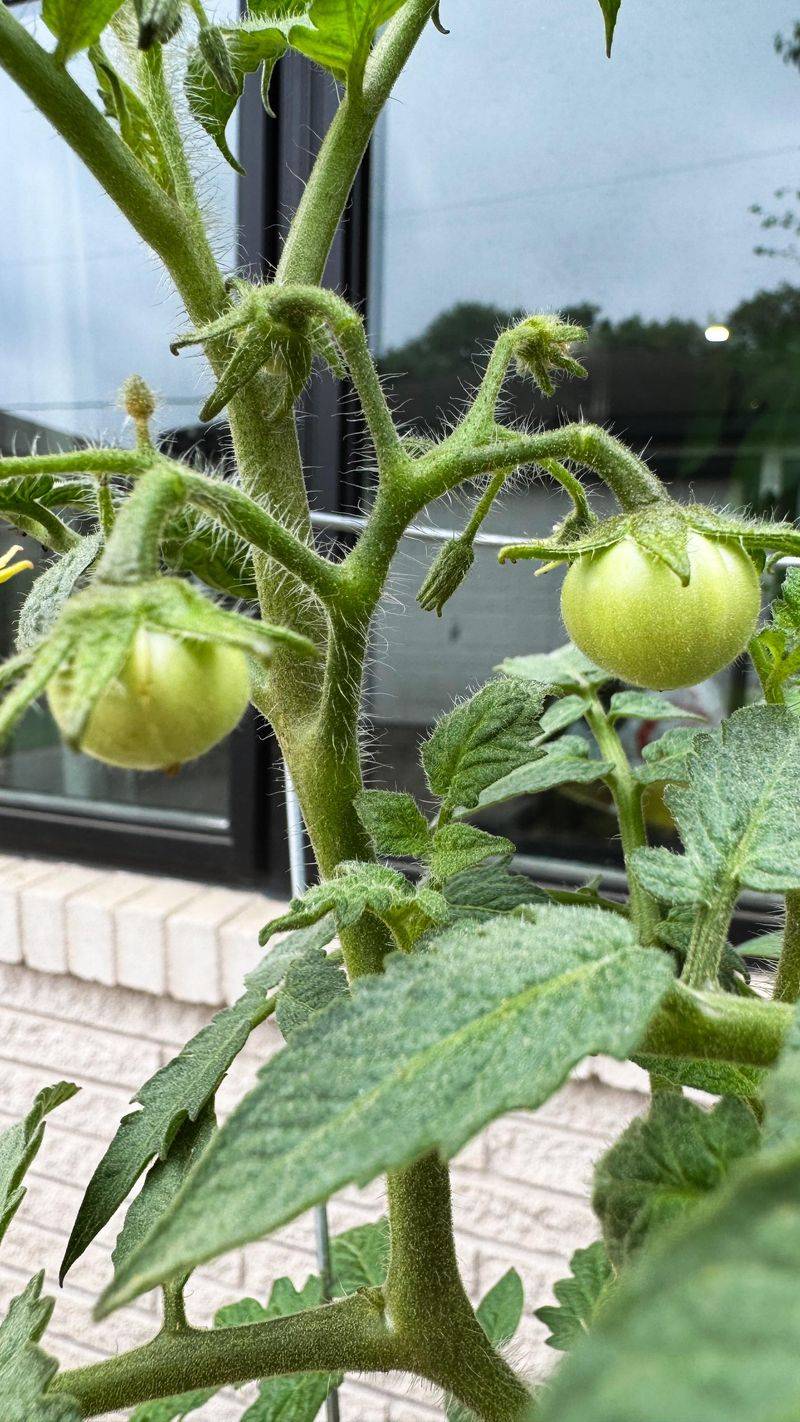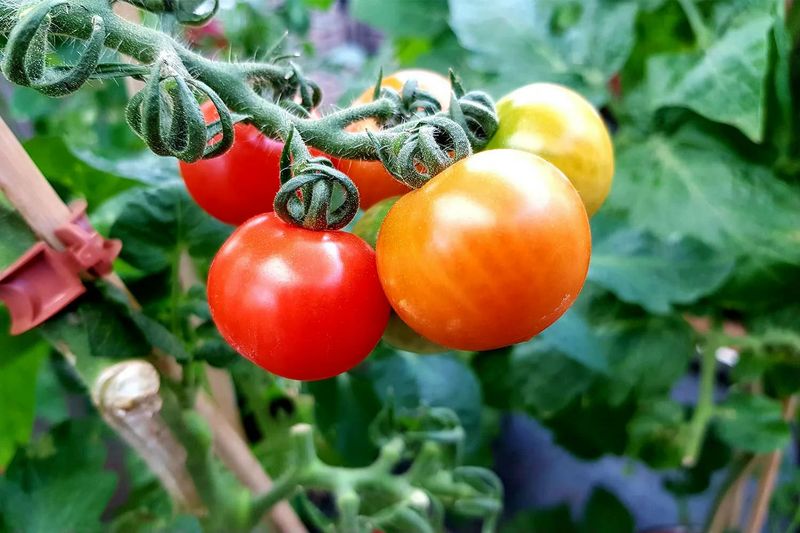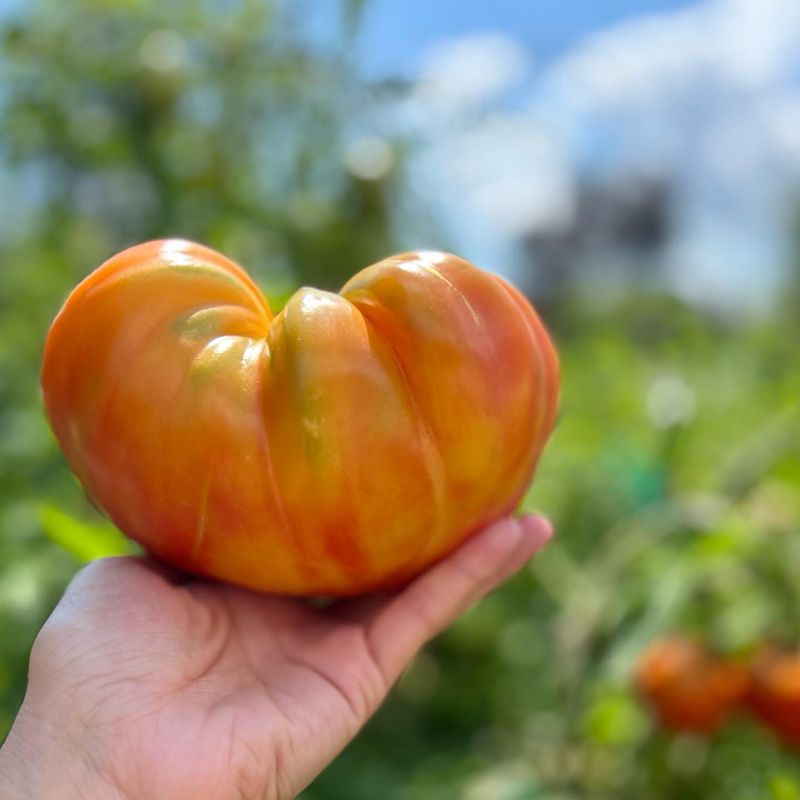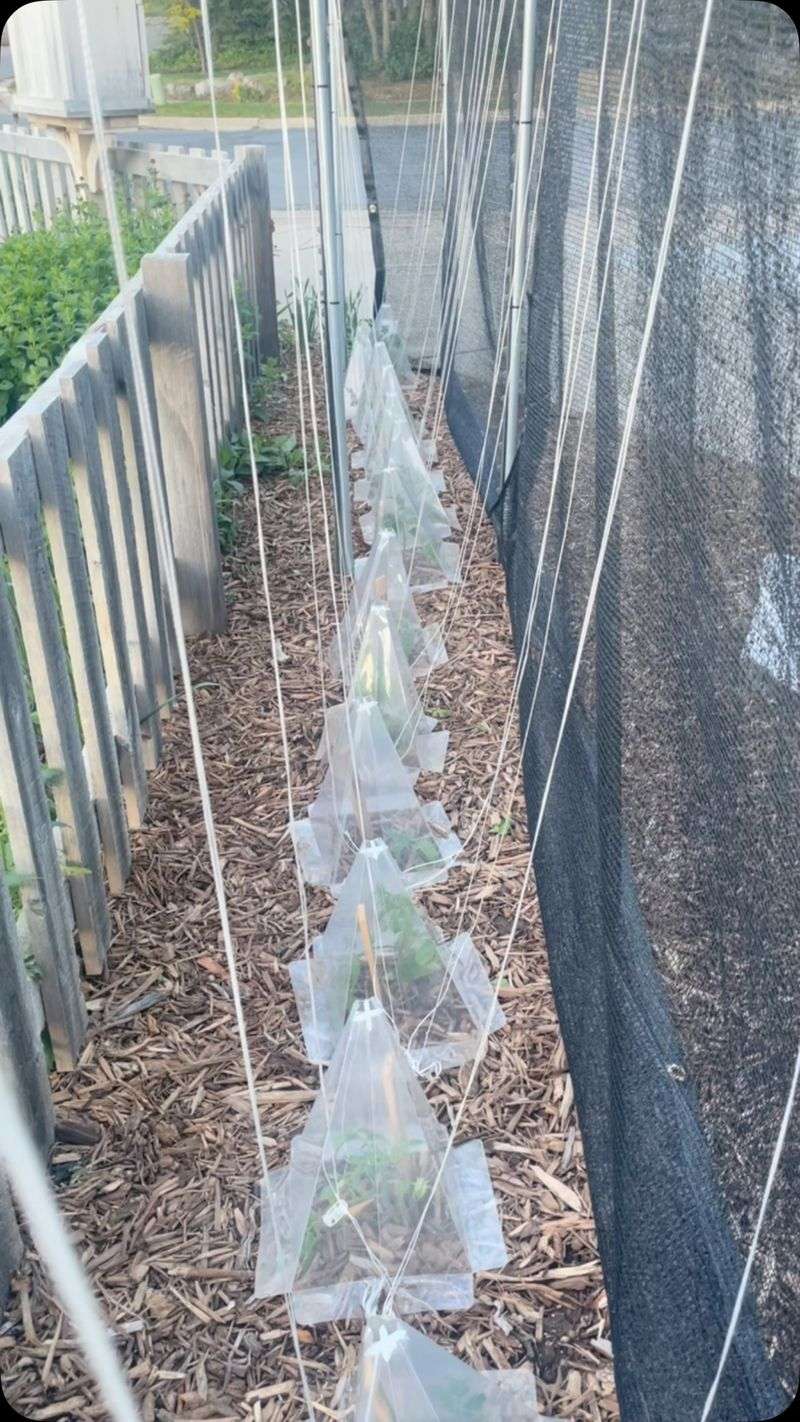Growing tomatoes for the first time? I remember my first try—I was excited, confused, and somehow ended up with way more questions than tomatoes.
These 12 tips would’ve saved me a lot of guesswork (and a few sad-looking plants). From picking the right variety to knowing when to water, it’s all simpler than it seems.
I’ve also thrown in a few game-changers that made my second round way more successful.
1. Sunshine is non-negotiable
Tomatoes are basically sun-worshippers in plant form. They need at least 6-8 hours of direct sunlight daily to produce those juicy fruits you’re dreaming about. Any less, and you’ll end up with scraggly plants and disappointing harvests.
When choosing your growing spot, watch how sunlight moves across your yard throughout the day. Morning sun is especially valuable since it dries dew quickly, reducing disease problems. Even the sunniest windowsill indoors usually isn’t enough – these plants demand serious rays!
2. Variety selection matters enormously
Not all tomatoes are created equal, especially when considering your growing conditions. Determinate varieties grow to a certain height then stop, perfect for containers. Indeterminate types keep growing and producing until frost kills them, ideal for longer harvests.
Cherry tomatoes like ‘Sun Gold’ or ‘Sweet 100’ are forgiving for beginners and produce quickly. For disease resistance in humid areas, look for varieties with letters like ‘VFN’ after their names. Your local garden center often carries varieties that perform well in your specific climate.
3. Plant deeper than you think
Unlike most garden plants, tomatoes actually benefit from deep planting. Those fuzzy stems aren’t just for show – they can develop roots when buried! Remove the lower leaves and plant so that only the top 4-6 inches of the plant remains above soil level.
This unusual planting technique creates a stronger root system that accesses more water and nutrients. For leggy seedlings, you can even plant them sideways in a trench with just the top poking out. The stem will naturally bend upward while developing roots along the buried portion.
4. Support systems prevent heartbreak
Flimsy tomato plants toppling over under the weight of their fruit is a rookie mistake you can easily avoid. Set up stakes, cages, or trellises at planting time – adding support later risks damaging established roots and stems.
Store-bought cages are often too small for indeterminate varieties, which can grow over six feet tall! For these giants, consider sturdy options like concrete reinforcement wire formed into cylinders. Even determinate types benefit from support to keep fruits off the ground where pests and rot lurk.
5. Mulch is your secret weapon
A 2-3 inch layer of organic mulch around your tomato plants works like magic. It suppresses weeds that would compete for nutrients, maintains consistent soil moisture, and prevents soil-borne diseases from splashing onto leaves during rain.
Straw, shredded leaves, or chemical-free grass clippings make excellent mulch choices. Wait until soil has warmed up before applying, usually a few weeks after planting. Keep the mulch from touching the stems directly to prevent rot issues at the base of your plants.
6. Water deeply but infrequently
Tomatoes prefer a good soaking followed by slight drying rather than frequent light sprinkles. This encourages roots to grow deeper and stronger. Aim for 1-2 inches of water weekly, adjusting for rainfall and temperature.
The classic advice to water the soil, not the leaves, is especially important with tomatoes. Wet foliage invites fungal diseases that can destroy your crop. Morning watering allows any splashed leaves to dry quickly in the sun. Consistent moisture prevents problems like blossom end rot and fruit splitting.
7. Pruning boosts production
Removing some stems and leaves might seem counterintuitive, but strategic pruning improves air circulation and directs energy to fruit production. Pinch off suckers – those small shoots that form in the crotch between the main stem and branches.
For indeterminate varieties, limit plants to 2-3 main stems for best results. Remove lower leaves as plants grow, especially any touching the soil. Always prune with clean tools to prevent spreading disease. Determinate types need minimal pruning – just remove yellowing leaves.
8. Feeding schedule affects flavor
Tomatoes are hungry plants, but timing their meals matters. At planting, incorporate compost or slow-release fertilizer. Once fruits begin forming, switch to a fertilizer with less nitrogen and more phosphorus and potassium (look for a higher second and third number on the package).
Over-fertilizing with nitrogen produces lush foliage but fewer fruits. Organic options like fish emulsion or compost tea work wonderfully for tomatoes. Feed every 2-3 weeks during the growing season, following package directions to avoid burning plants with too much fertilizer.
9. Companion planting boosts health
Tomatoes play well with certain garden neighbors and despise others. Basil planted nearby improves tomato flavor and repels pests. Marigolds deter nematodes in the soil, while nasturtiums confuse aphids and other unwanted insects.
Keep tomatoes away from potatoes, corn, and fennel, which can stunt growth or increase disease problems. Carrots, onions, and asparagus make excellent tomato companions. This strategic planting reduces pest issues naturally and can enhance growth without additional chemicals – a win-win for organic gardeners.
10. Temperature extremes cause problems
Tomatoes have strong opinions about temperature. They refuse to set fruit when nighttime temperatures drop below 55°F or rise above 75°F. Those empty flowers dropping without forming tomatoes? That’s likely temperature stress, not poor pollination.
During heat waves, provide afternoon shade with lightweight row covers. Early-season varieties like ‘Early Girl’ perform better in cool climates. Warm-climate gardeners should choose heat-tolerant varieties like ‘Solar Fire’ or ‘Florida 91’. Microclimates in your yard can make a significant difference in success.
11. Container growing requires special care
Limited space? No problem! Tomatoes thrive in containers at least 18-24 inches wide and deep. Smaller pots dry out too quickly and limit root growth. Use high-quality potting mix specifically formulated for containers, not garden soil.
Container tomatoes need more frequent watering and fertilizing than ground-planted ones. Self-watering containers help maintain consistent moisture. Determinate or dwarf varieties like ‘Patio Princess’ or ‘Tiny Tim’ are ideal for pots. Even cherry tomatoes in hanging baskets can produce impressive harvests with proper care.
12. Disease prevention saves crops
Many common tomato diseases can be prevented with simple practices. Space plants properly (at least 24 inches apart) to improve air circulation. Always water at the base, never from overhead, to keep foliage dry.
Remove and destroy (don’t compost) any diseased leaves immediately. Crop rotation prevents soil-borne diseases – don’t plant tomatoes where other nightshades (peppers, eggplants, potatoes) grew in the past three years. Disease-resistant varieties provide insurance against common problems like Verticillium wilt, Fusarium wilt, and nematodes.
13. Hand pollination increases yields
While tomatoes are self-pollinating, they sometimes need help, especially in very still air or extreme temperatures. Gently tap flowering stems every few days to shake pollen loose, or use an electric toothbrush (without touching the flower) to vibrate blossoms.
Indoor or greenhouse tomatoes definitely need manual pollination since natural pollinators can’t reach them. The best time for hand pollination is midday when flowers are fully open and humidity is low. This simple practice can dramatically increase your fruit set and overall yield.
14. Harvesting timing affects flavor
The perfect moment to pick tomatoes depends on your priorities. For maximum flavor, allow fruits to fully ripen on the vine until they’re deeply colored and slightly soft to gentle pressure. The aroma at the stem end should be strong and sweet.
During peak season, check plants daily – tomatoes can go from perfect to overripe quickly. To prevent cracking, harvest before heavy rainstorms. For longer storage, pick at the “breaker stage” (when color first appears) and ripen indoors. Never refrigerate tomatoes unless fully ripe – cold temperatures destroy their flavor.
15. Saving seeds preserves favorites
Found a tomato variety you absolutely love? Save its seeds! Choose fully ripe fruits from your healthiest plants. Scoop out seeds with their gel, put them in a jar with water, and let ferment for 2-3 days until a mold layer forms on top.
Rinse thoroughly in a fine strainer until seeds are clean, then spread on coffee filters to dry completely. Store in paper envelopes in a cool, dry place. This only works reliably with open-pollinated or heirloom varieties – hybrid seeds won’t grow true to type next season.
16. Season extension techniques
Don’t let your tomato season end too soon! Wall-o-Water protectors or plastic cloches help plants get an early start by warming the soil and protecting from late frosts. Red plastic mulch reflects specific light wavelengths that boost growth and ripening.
For fall harvests, cover plants during early frosts with old bedsheets. When serious frost threatens, pick all green tomatoes to ripen indoors. Some varieties like ‘Northern Delight’ and ‘Stupice’ mature faster, perfect for short-season areas. With these techniques, you can enjoy homegrown tomatoes weeks longer.

